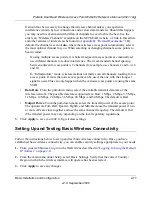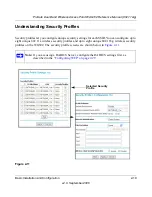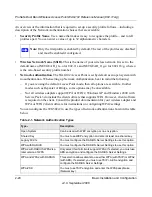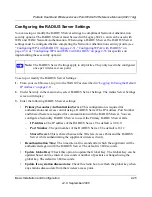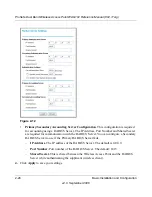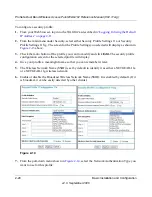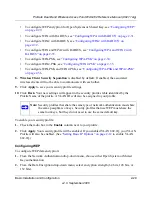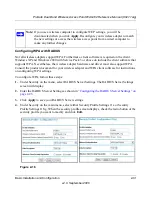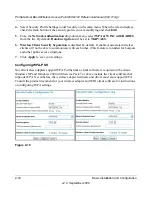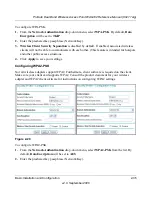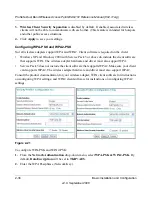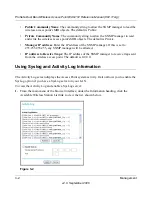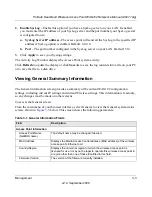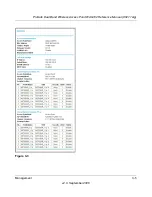
ProSafe Dual Band Wireless Access Point WAG102 Reference Manual (802.11a/g)
Basic Installation and Configuration
2-29
v2.0, September 2006
•
To configure WEP encryption for Open Systems or Shared Key, see
“Configuring WEP”
on page 2-29
.
•
To configure WPA with RADIUS, see
“Configuring WPA with RADIUS” on page 2-31
.
•
To configure WPA2 with RADIUS, see
“Configuring WPA2 with RADIUS” on
page 2-32
.
•
To configure WPA and WPA2 with RADIUS, see
“Configuring WPA and WPA2 with
RADIUS” on page 2-33
.
•
To configure WPA-PSK, see
“Configuring WPA-PSK” on page 2-34
.
•
To configure WPA2-PSK, see
“Configuring WPA2-PSK” on page 2-35
.
•
To configure WPA-PSK and WPA2-PSK, see
“Configuring WPA-PSK and WPA2-PSK”
on page 2-36
.
8. Wireless Client Security Separation
is disabled by default. If enabled, the associated
wireless clients will not be able to communicate with each other.
9.
Click
Apply
to save your security profile settings.
10.
Click
Back
. Your new settings will appear in the security profiles table identified by the
Profile Name of the profile. A VLAN ID will also be assigned to your profile.
To enable your security profile:
1.
Check the radio box in the
Enable
column next to your profile.
2.
Click
Apply
. Your security profile will be enabled. If you enabled VLAN 802.1Q, your VLAN
Profile will also be enabled. (See
“Setting Basic IP Options” on page 2-12
to enable VLAN
802.1Q.)
Configuring WEP
To configure WEP data encryption:
1.
From the Network Authentication drop-down menu, choose either Open System or Shared
Key authentication.
2.
From the Data Encryption drop-down menu, select encryption strength (64 bits, 128 bits, or
152 bits).
Note:
Security profiles that share the same type of network authentication must share
the same passphrase or keys. Security profiles that use WEP must share the
same four keys, but they do not need to use the same default key.



